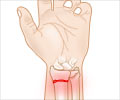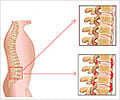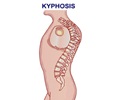Philadelphia, Pa. (July 18, 2013) – Most professional athletes are able to return to competition within a year after vertebral fusion surgery on the upper (cervical) spine, reports

When Can Pro Athletes Return to Play after Cervical Spinal Fusion? Dr. Joseph C. Maroon of University of Pittsburgh Medical Center and colleagues analyzed the treatment and outcomes of one type of cervical spinal fusion surgery, called anterior cervical discectomy and fusion (ACDF), in 15 professional athletes. The study focused on criteria for making return-to-play (RTP) recommendations.
The patients were eight football players and seven wrestlers. All were cleared for RTP after they had a normal neurological examination and x-rays showing vertebral fusion. Thirteen players returned to their sport within two to twelve months—the average RTP time was six months. Eight athletes are still participating; five retired after competing for another one to three years.
"After a single-level ACDF, an athlete may return to contact sports if there are normal findings on a neurological examination, full range of neck movement, and arthrodesis," Dr. Maroon and coauthors write. They note that athletes undergoing ACDF may be at risk for future spinal degeneration or disease, one level above or below the vertebral fusion.
Variations in Treatment for Minor Head Injuries Dr. Rebekah Mannix of Children's Hospital Boston and colleagues analyzed national data on more than 10 million health care visits for minor head injuries between 2005 and 2009. These included about 6 million visits to EDs and 4 million to "outpatient" settings—doctors' offices or hospital-based clinics.
Advanced imaging tests (CT or MRI scans) were more often performed for patients seen at EDs: 63 percent, compared to 14 for those seen at doctors' office and 21 percent at hospital clinics. A return visit was arranged for 54 percent of patients at doctors' offices and 29 percent at hospital clinics. Arrangements for follow-up care were made for 67 percent of patients seen at EDs.
Advertisement
Philanthropy for Neurosurgery Research Funding In a special article, Dr. Edie E. Zusman of Sutter East Bay Neuroscience Institute, Castro Valley, Calif., and colleagues discuss the evolving role of philanthropic funding for neurosurgery research and program development. Such activities have traditionally been funded by government and industry—but as these sources decline, philanthropy has become "an increasingly important mechanism for building, maintaining, and expanding neurosurgical research programs."
Advertisement
Source-Eurekalert













